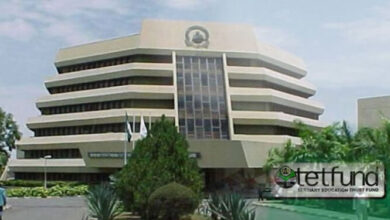UBA: An Inefficient Money Machine?
In today’s fast-paced and competitive business landscape, efficiency is a crucial imperative for corporate leadership. Efficient leadership enables organizations to optimize resources, streamline processes, and drive innovation, ultimately leading to improved productivity, profitability, and sustainability. By prioritizing efficiency, leaders can better navigate complex challenges, capitalize on opportunities, and create value for stakeholders. Efficient leadership also fosters a culture of continuous improvement, empowering employees to identify areas for enhancement and implement solutions that drive growth and success. As the business environment continues to evolve, the ability to lead efficiently has become a defining characteristic of successful organizations.
The lack of efficiency in corporate leadership can have severe consequences, including reduced profitability, decreased competitiveness, and compromised sustainability. In the case of United Bank for Africa (UBA), the bank faced several challenges in the first half of 2025, including rising operating expenses, which impacted its profit margins. Despite a 17.28% growth in gross earnings to N1.608 trillion, driven by a 32.89% increase in interest income, UBA’s profit before tax dropped slightly to N388.4 billion due to higher interest expenses and operating costs. Additionally, the bank’s exposure to regulatory forbearance, particularly in the oil and gas sector, poses a risk to its financial stability. UBA’s investment in technology upgrades, amounting to N48 billion in 2024, is expected to enhance its operational efficiency and reduce fraud incidents, which decreased by 45.35% to N288 million in H1 2025. The bank’s strong financial performance, with a profit after tax of N335.53 billion, demonstrates its resilience amidst macroeconomic challenges .
Decoding United Bank for Africa’s Margin Pressures: An Interpretative Analysis
United Bank for Africa’s (UBA) recent financial results reveal a complex picture, marked by resilience in earnings growth and asset expansion, yet beset by margin pressures due to rising costs. To understand the intricacies of this situation, it’s essential to examine the underlying factors driving these trends.
The Story Behind the Numbers
UBA’s gross earnings grew 17.28% to N1.608 trillion in H1 2025, driven by a 32.89% increase in interest income. However, profit margins and efficiency ratios are under stress due to higher interest expenses and operating costs. The bank’s net interest margin slightly dipped to 3.59% from 3.65%, indicating tighter spreads.
Interpreting the Trends
Several factors contribute to UBA’s margin pressures:
- Rising Interest Expenses: A 70.43% increase in interest expenses to N560.61 billion has impacted the bank’s bottom line.
- Operating Expense Growth: Higher administrative costs and other expenses have contributed to the decline in profit before tax.
- Competition and Market Dynamics: The banking sector’s competitive landscape may be forcing UBA to offer more attractive interest rates, thereby compressing margins.
A Deeper Look
To fully comprehend UBA’s situation, it’s crucial to consider the broader economic context and industry trends. The banking sector in Nigeria faces challenges such as ¹:
- Economic Uncertainty: Fluctuations in oil prices, currency volatility, and other macroeconomic factors can impact banking performance.
- Regulatory Requirements: Compliance with regulatory standards can increase costs and affect profitability.
- Digital Transformation: The shift towards digital banking requires significant investment in technology and infrastructure.
Conclusion
UBA’s margin pressures are a multifaceted issue, influenced by both internal and external factors. While the bank’s strong financial performance and attractive valuation make it an interesting prospect for investors, understanding the underlying drivers of its margin pressures is essential for making informed decisions. By examining the complex interplay of economic, regulatory, and industry factors, stakeholders can gain a deeper insight into UBA’s situation and its potential implications for the bank’s future performance ¹.




